Beyond the Bucket List
7 Off-Beat Travel Adventure Alternatives
When borders are open and you’re ready to travel again, where will you go? Whether you’re a seasoned traveler who has already “been there, done that” or you’re simply the type who prefers to go off the beaten path, here are a few worthy lesser-known alternatives to common classic attractions to broaden your bucket list.
After the pandemic crushed our ability to travel freely, it’s no surprise that as borders re-open and people grow comfortable with travel again, we’re putting more thought into the places we’re planning to go. Experts concur that, as we’re making up for some long-lost travel time, it shouldn’t be just anywhere.
The classic bucket-list destinations are well-known: The Grand Canyon, Stonehenge, the Eiffel Tower and many more. They’re iconic and worthy for excellent reasons, but many travelers are seeking less popular and not-so-crowded locations. Driven partly by a pandemic protocol desire for social distancing, it’s also because the path-less-plodded has its own perks, including experiencing a place that most of the world has not.
The following are attractions, activities and destinations to expand your bucket list beyond the typical tourist fan favorites. From a cosmic cave in Chile to a secret stone pyramid in the eastern Scotland Highlands to an expedition in Arctic Canada to track an elusive whale known as “the unicorn of the sea,” this list will titillate your imagination and, perhaps, your next itinerary.
The Classic:
Egypt’s Giza Pyramids
The Alternative:
Scotland’s Balmoral Cairns
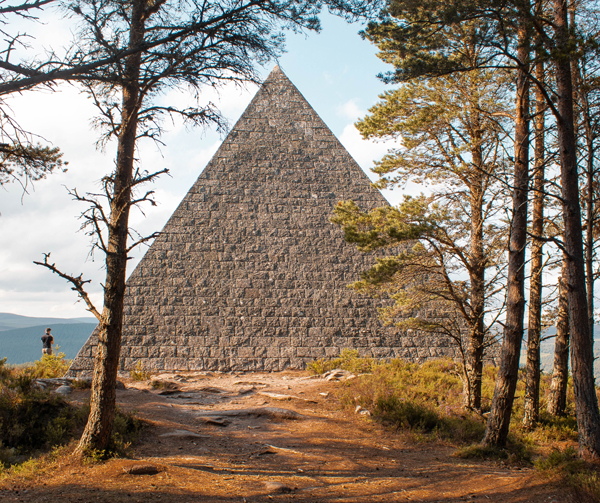
Naturally, Cairo and Mexico are the first destinations that come to mind when you think “pyramid.” But you should add the Scottish Highlands to that list. Tucked among the wooded landscape of Cairngorms National Park stands a four-sided, 35-foot-tall stone monolith that has rightly earned the name of “Scotland’s Pyramid.”
While technically a cairn — and one of 11 that have stood sentinel here since the mid-1800s — Prince Albert’s Cairn was erected by Queen Victoria, whose summer holiday home, Balmoral Castle, is just around the corner. But unlike the other cairns which are conical in shape and a more modest 10 to 15 feet in height, this one — and the most spectacular of the lot which you can string together in a six-mile hike — is constructed from coursed, dressed granite. Measuring 41 feet by 41 feet at the base, it towers above the pines and purple pops of heather atop Creag an Lurachain, where — as the inscription states — it commands “a most extensive prospect on every side.”
The Classic:
U.S.’s Arches National Park
The Alternative:
Chile’s Marble Caves
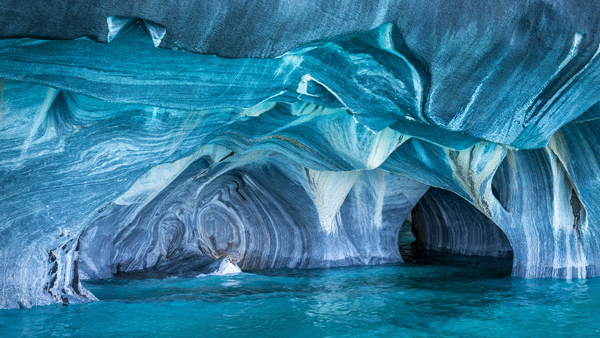
There’s another deeply-hued rock wonderland weathered by water that you have to see to believe — this one located on the coast of Lake General Carrera, a remote glacial lake shared by Argentina and Chile.Called the Marble Caves (or “Capillas de Mármo”), dozens of gently sloping caves, intricate columns, maze-like tunnels, and contorted arches have been formed by the Patagonian winds and waves wearing away the rugged coast’s marble rock cliffs for six millennia. Even more impressive, the spectacle comes awash in undulating blue tones of teal and turquoise, sapphire and seafoam green.
These stunning shades, however, aren’t the true colors of the marble itself, but a reflection of the ever-changing colors of the glacial lake. That means they change over the course of the year, depending on water levels and season: Usually, in winter and early spring, the walls are lighter shades of blue; in the summer and fall, they deepen to colors of cobalt.
The Classic:
Russia’s St. Basil’s Cathedral
The Alternative:
Italy’s Santuario Madonna della Corona

If you’ve ever marveled at the colorful domes of Moscow’s Red Square icon, then this 1530 chapel located in Northern Italy should be next on your list. Not just for its stunning salmon-colored Gothic-style façade, marble adornments and looming bell tower but because of where it’s positioned: halfway up a steep cliff face on Mount Baldo, roughly 2,500 feet above sea level overlooking the valley of the Adige River.
While the chapel wasn’t built until the sixteenth century, the cliffs and hidden recesses of Monte Baldo have been home to the holy since the eleventh century when hermit monks would retreat for silent reflection. Today, however, it’s accessible to anyone who wishes to see one of the most spectacular (and precariously perched) sanctuaries in all of Italy — just as long as you are willing to hoof it up the “Pilgrim’s Path,” a 1.5-mile route that consists of 1,540 stone steps.
The Classic:
African Safari
The Alternative:
Arctic Canada’s Narwhal Expeditions
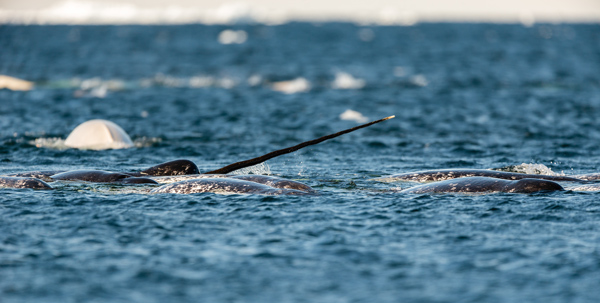
Synonymous with African safaris, there’s no arguing that seeing “the Big Five” is a big deal. Still, there’s a reason they call narwhals “the unicorn of the sea” — and that’s not just because of their long tusks (actually an enlarged tooth) protruding from their heads. It’s because these deep-diving, ice-loving whales are one of the world’s most elusive creatures. Having never been successful kept in captivity, the only way to potentially witness these whales is in the wild during a spring or summer trip to the Canadian Arctic.
The reason for that is sea-ice, helping to hide them from predators. In fact, during the winter, they spend roughly five months under ice in the Baffin Bay-Davis Strait area, two large basins between Canada’s Baffin Island and Greenland. But once the ice begins to crack and melt in the spring, they start their migration north, following the receding ice to their summer feeding grounds — giving us a brief window of time to see them up close as they make their way westward along the floe edge of Lancaster Sound, coined “the Serengeti of the North” for its rich wildlife.
The Classic:
U.S.’s Grand Canyon
The Alternative:
Iceland’s Sigöldugljufur
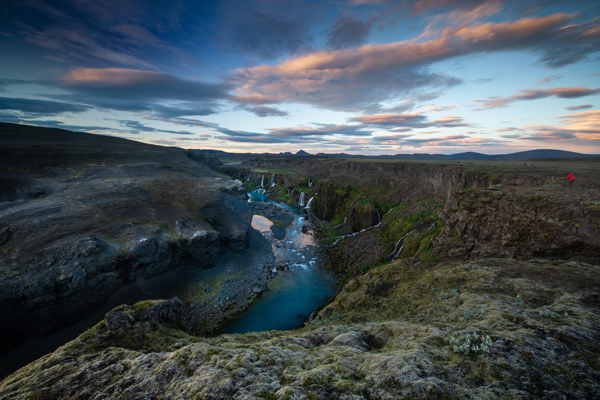
Iceland is home to dozens of breathtaking canyons. But unlike Fjaðrárgljúfur and Stakkholtsgja, which have both been recently popularized in music videos, Sigödugljúfur Canyon in the central Highlands is still relatively below the radar — which can be hard to believe once you lay eyes on it.
That’s owed to its remote location and lack of signs advertising the site. To get there, you have to drive miles through rocky, barren terrain on Iceland’s notorious F-roads (unpaved gravel tracks that are not regularly maintained), park, then hike a little over a half-of-a-mile to the rim of the canyon.
It’s more than worth it, though. Nicknamed the “Valley of Tears,” dozens of small waterfalls spring from the walls of the canyon, running down meandering cliffs edges into the valley below, like something out of a J.R.R. Tolkien novel. While not as large as the island’s other canyons, its vividly blue water, abundant technicolor green vegetation, and lava landscapes more than make up for that.
The Classic:
France’s Louvre Museum
The Alternative:
Cancún’s Museo Subacuático de Arte
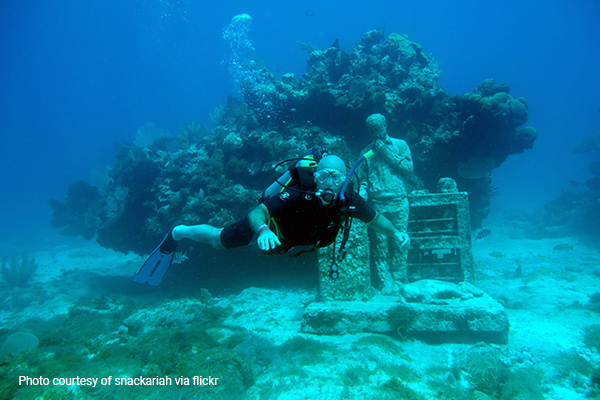
No, there is nothing like gazing upon the Mona Lisa with your own eyes. But the otherworldly figures of Cancún’s Museo Subacuático de Art (or the Cancún Underwater Museum of Art) are arguably just as bewitching — and borderline eerie for the way the coral-covered creations resemble something from the mind of Mexican filmmaker Guillermo del Toro.
Tucked between Cancún and the island of Isla Mujeres off the coast of Mexico, a current total of 500 life-sized sculptural installations — the majority by noted English sculptor and environmentalist Jason deCaires Taylor — have been scuttled to the ocean floor since the project first began in 2009. Today, divided into three galleries, the underwater museum collectively covers 420 square meters, making it the largest and most ambitious underwater art installation in the world. But it wasn’t created solely for the amusement of divers, snorkelers and those who come to view the spectacle via glass-bottom boats. Made from a pH-neutral marine concrete, the sculptures naturally promote coral growth and marine diversity, as well as divert traffic away from other local coral reefs facing decay due to climate change and tourism.
The Classic:
Australia’s Outback
The Alternative:
Peru’s Huacachina
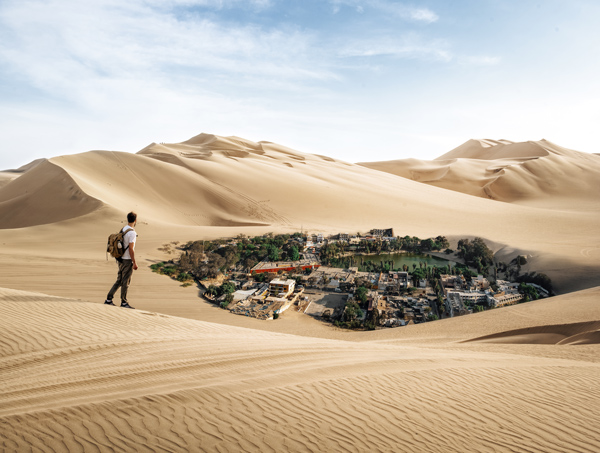
While Peru may be better known for its rugged soaring Andean landscapes, around 10% of the country actually consists of sandy coastal desert. And one of the best places to take in that slice is a little-known place called Huacachina, a unique desert oasis that seemingly appears out of nowhere…much like a mirage.
Located about five hour’s south of Lima, this small city of 115 people is South America’s only natural desert oasis, centered around the green waters of the Huacachina Lagoon, which thanks to an underground current, has generated the lush growth of palm, eucalyptus and carob trees. In the 1960s, most came to bathe in the lagoon, which was thought to have therapeutic properties, but, today, the town has since become a mecca to modern adventurers. That’s a result of the surrounding rolling orange sand dunes — said to be the tallest in South America — which are prime territory for dune-buggy tours and sandboarding.
Going Off the Beaten Path? Get Global Rescue.
Traveling to hard-to-reach locations has its obvious allure, but it also means that you’re raising your risk when you do so, given your lack of accessibility if an emergency should arise. Make sure you always travel prepared with Global Rescue, a membership-based company offering travel protection services, like field rescue, medical and security evacuation, travel safety insight and more.
